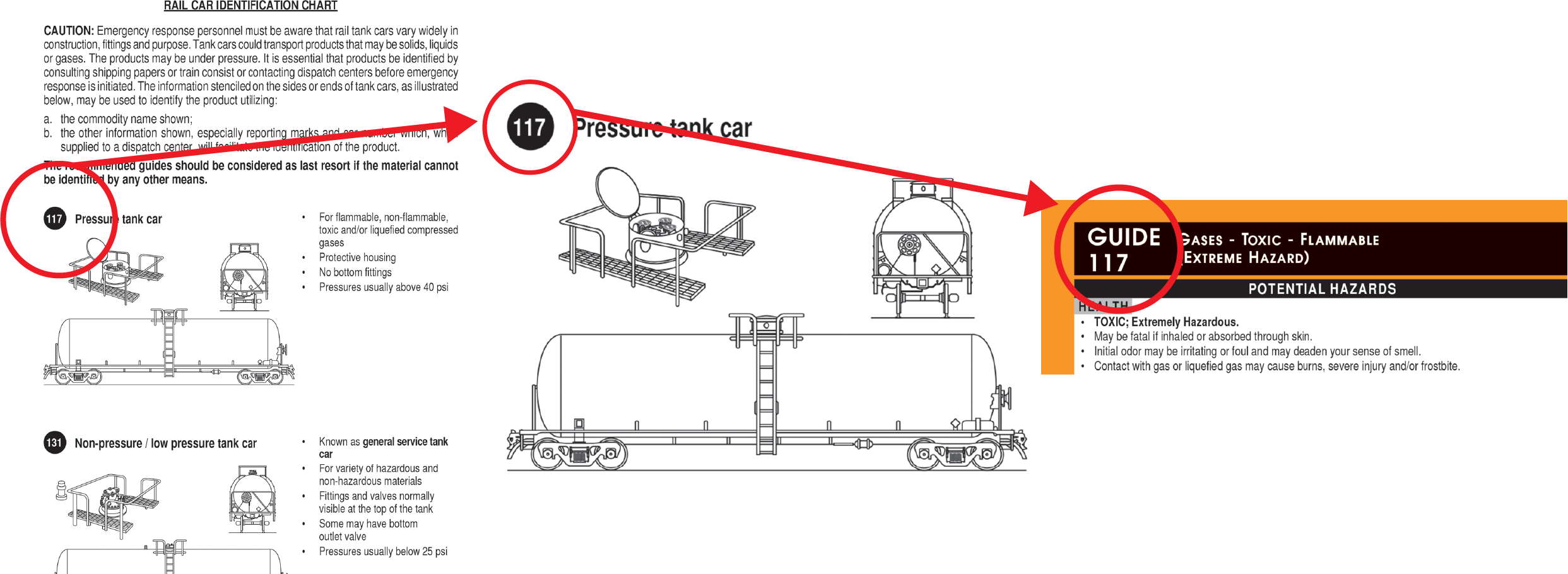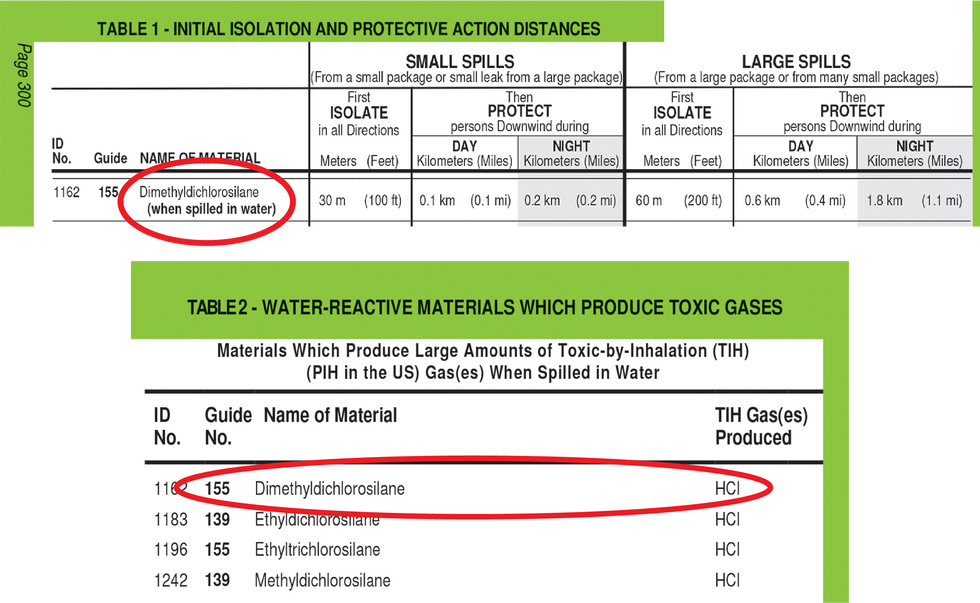How to use the Emergency Response Guidebook
The Emergency Response Guidebook (ERG) contains information on how to respond to an emergency incident involving the transport of hazardous materials/dangerous goods. Information from the ERG can be used to satisfy the requirement at 172.602 that hazmat shipping papers must include emergency response information.
Drivers should be familiar with the ERG and how to use it.
The ERG has five different sections that are used to determine the appropriate response for the hazardous material or dangerous good that is involved in an emergency:
- Identification Number Index (Yellow Pages): This index allows you to look up the hazardous material or dangerous good by UN or ID number. It provides the material name, and directs you to the proper response guide in the Guide Number Index (Orange Pages).
- Material Name Index (Blue Pages): This index allows you to look up the hazardous material or dangerous good by name. This directs you to the proper response guide in the Guide Number Index (Orange Pages), and provides the UN/ID number.
- Guide Number Index (Orange Pages): This section contains the safety guides that form the basis of an emergency response. Each category of hazardous material corresponds to a numbered response guide in the Guide Number Index. The guides contain details on:
- the hazards and health risks of the material;
- appropriate public safety measures, such as evacuation;
- emergency response actions, such as what to do in the event of fire or spills;
- appropriate first aid and more.
- Initial Isolation and Protective Action Distances Index (Green Pages): The Green Pages consist of three tables to consult when the material involved is highlighted in green in either the Yellow or Blue pages:
- Table 1: Initial Isolation and Protective Action Distances
- Table 2: Water-Reactive Materials Which Produce Toxic Gases
- Table 3: Initial Isolation and Protective Action Distances for Large Spills of Different Quantities of Six Common Toxic Inhalation Hazard Gases
- Additional Information (White Pages): This section includes:
- a glossary of terms,
- a user guide, and
- other helpful information.
ERG flowchart
To locate the correct emergency response information within the ERG, refer to the flowchart at the front of the book (usually on page 1).
NOTE: IF THERE IS MORE THAN ONE HAZARDOUS MATERIAL OR DANGEROUS GOOD INVOLVED: Do not attempt to use the flowchart to respond. Instead, contact the appropriate emergency response agency telephone number (located on the inside back cover of the ERG).
Looking up a material
Step 1: Identify the material involved in the emergency. This will help direct you to the appropriate response guide within the Orange Pages.
a) Check the container for an explosive placard or label.
- If there is an explosive placard in Division 1.1, 1.2, 1.3 or 1.5 - Refer to GUIDE 112 in the Orange Pages for further instructions.

- If there is an explosive placard in Divisions 1.4 or 1.6 - Refer to GUIDE 114 in the Orange Pages for further instructions.

b) If you know the UN/ID# for the material:
ID numbers are listed in numerical order in the Yellow Pages section of the ERG. As an example, if the material is UN1013, find that ID number in the Yellow Pages. The listing in the Yellow Pages will direct you to the correct Guide Number in the Orange Pages, in this case Guide 120.

c) If you know the name of the material:
Names are listed in alphabetical order in the Blue Pages. As an example, if the material is “Carbon dioxide,” find that name in the Blue Pages section of the ERG. The listing in the Blue Pages will direct you to the correct Guide Number in the Orange Pages, in this case Guide 120.

d) If you do NOT know the ID# OR the name of the material:
- Check for markings, labels, and placards on the container of hazardous material or dangerous goods. Refer to the “Table of Markings, Labels and Placards” pages near the front in the ERG. The number inside the black circle next to each group of placards will direct you to the correct guide in the Orange Pages.

- If there is no placard or label, but the material is in a rail car, use the “Rail Car Identification Chart” near the front of the ERG to determine the correct guide in the Orange Pages.

- If NONE of these apply, start with Guide 111 in the Orange Pages.

Step 2: Green-highlighted materials and polymerizing materials
If, in either the Yellow or Blue Pages, the material’s Guide Number is followed by a “P,” this indicates that that material may be subject to violent polymerization. This means the container may rupture or explode.
- If the “P” material IS NOT also highlighted in green, proceed to the appropriate guide in the Orange Pages:

Letter “P” but NO green = OK to proceed to Guide 131 in the Orange Pages
- If the “P” material name IS also highlighted in green, an initial isolation and protective action distance will apply to that material; check TABLE 1 in the Green Pages.

Letter “P” AND green = Consult Table 1 in Green Pages AND Guide 131 in Orange Pages
- If the material highlighted in green IS ON FIRE:
- First use the appropriate guide in the Orange Pages for EVACUATION distances;
Then protect in a downwind direction according to TABLE 1 of the Green Pages.
- First use the appropriate guide in the Orange Pages for EVACUATION distances;
- If the material highlighted in green IS NOT ON FIRE:
- First check TABLE 1 in the green pages for isolation and protective action distances;
- Then consult the appropriate guide in the Orange Pages.
- If the material’s name in TABLE 1 includes the notation (when spilled in water), consult TABLE 2 in the Green Pages for a list of generated gases, check the appropriate guide number, and DO NOT USE WATER as an extinguishing agent if the material catches fire.

